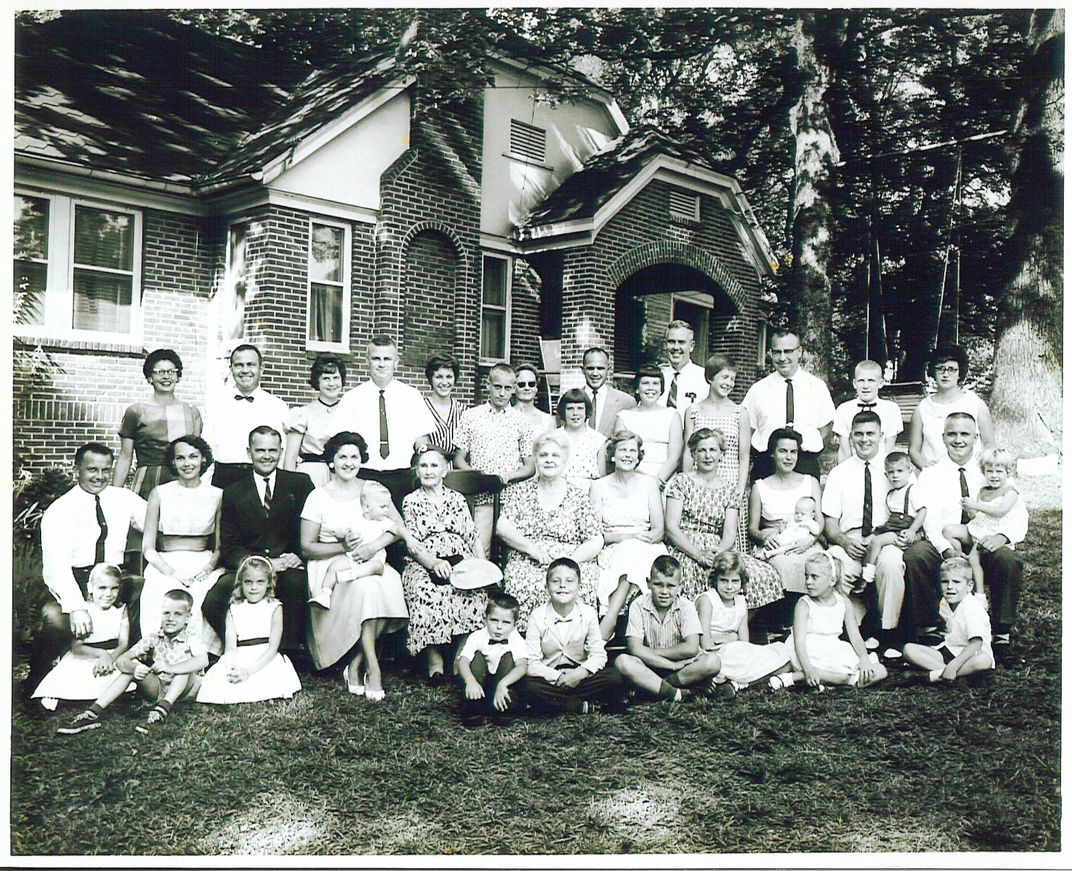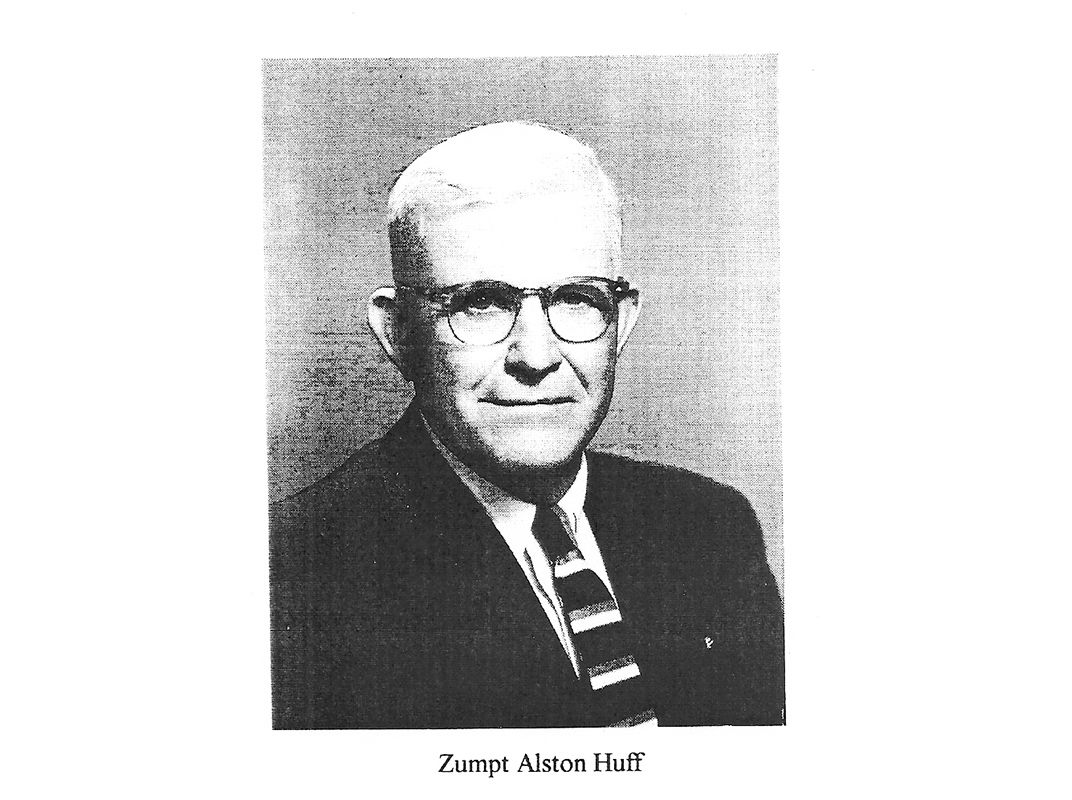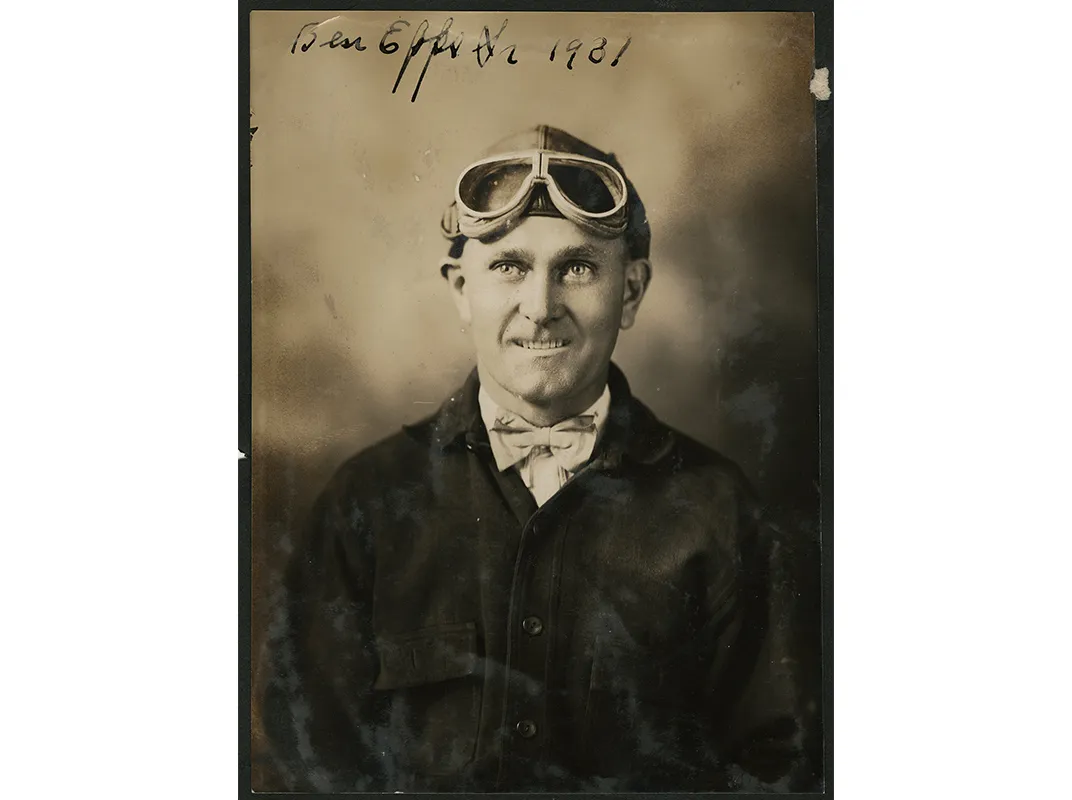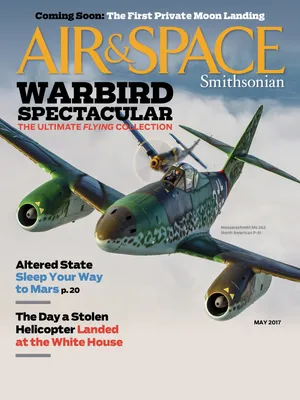The Birth of Flight in Georgia
Georgians are justly proud of the day Ben Epps first flew his airplane. But for 100 years, they’ve been proud of the wrong day.
/https://tf-cmsv2-smithsonianmag-media.s3.amazonaws.com/filer/95/64/95641d1d-ea04-412b-927f-0256cac8e59a/11g_fm2017_002ehiiquin_crop.jpg)
In 2007, While I was waiting to board a flight at the Atlanta airport, I happened to notice a photograph in the local newspaper, left on the seat next to me. The picture appeared under the headline “Do you have a dream like teen pilot in 1907?” It showed a young Ben Epps standing on Washington Street in Athens, Georgia, next to the craft he’d built and flown a hundred years ago—the first airplane in the state to fly. A Georgia resident for more than 60 years, I’d seen that photograph dozens of times and knew about that flight, but I didn’t know how Ben Epps managed to design his own airplane a mere four years after the Wright brothers had pioneered powered flight.
I decided to find out.
Ben Epps is a legend in Athens, where I once lived. The local papers have reported the highlights of his story many times; he was among the first to be enshrined in the Georgia Aviation Hall of Fame; two state historical markers have been erected in his honor; the Athens airfield is named for him; and his life-size statue stands near the Athens-Clarke County City Hall. Each of these memorials proclaims that Ben Epps built and flew the first airplane in Georgia in 1907, but none states the month or day. Even Epps’ descendants didn’t know the exact date. Speaking at the unveiling of the statue near city hall, grandson Billy Galt said, “There’s absolutely no proof of when or where….” As an article in Athens Magazine on the flight’s 100th anniversary concluded, “Nobody knows exactly when it happened, but we do know the year, 1907.”
Epps never gave an interview or wrote or talked about the flight—not even with his wife, Omie, whom he married in 1913. Fifteen months after Ben’s death in 1937, Omie, interviewed for a Work Projects Administration oral history (part of American Life Histories in the Library of Congress), said her husband was “never a person to talk about himself. He always brought the newspaper clippings home for me to read.”
Hoping the details of Georgia’s first airplane had been recorded at the time it flew, I started looking in the Hargrett Rare Book and Manuscript Library at the University of Georgia, which holds Ben Epps’ scrapbook and other documents. As I searched, I found information that contradicted what I’d always read. The first red flag was a clipping from the Athens Banner dated May 14, 1909. The headline read “Two Athens Boys Building Airship.” The article stated, “This is the first attempt to build an airship in Georgia.” How could this be the “first” if Epps had flown in 1907? The article also stated that Epps was not building the aircraft by himself.
I found more in the collection: a photograph of a biplane on crates, without an engine or undercarriage; beside it were two individuals, identified as Ben Epps and Zumpt Huff. The picture was dated 1909. Among the papers was a letter dated February 21, 1969, from Huff to Ben Epps Jr. In the letter, Huff asks Ben Jr. to send copies of pictures from the scrapbook. He describes the pictures he wants, one being of the “Wreck at Lynwood Park, this one is the only one I have seen that you have of Plane he made his first and second flight in.” Huff writes that he wanted the pictures for an article he was working on and for a glass-covered, wood-frame collage he was making to memorialize the first flight. He also tells Ben Jr., “I believe I am on the right track now to get the exact dat[e] on that first Flight.”
So Epps had a partner, the flight probably happened at Lynwood Park, and, maybe most surprising, it probably occurred in 1909, not 1907. For the residents of Athens, that revelation would be a shock.
The Hargrett archive contained the original of that oft-reproduced picture of Ben and his airplane. A handwritten notation at the bottom, which had always been cropped off the published copies, read “One of the First Built 1907—2 cylinder Anzani motor.” But studying the photo, I saw in the background a building painted with the words “Southern Express Company.” Research revealed that the company had not completed its building until late fall 1908—the picture couldn’t have been taken in 1907. A second picture in the collection, also dated by hand “1907,” shows another building I recognized. Today the building is The Georgian Condominiums, but in the photograph, it was the old Georgian Hotel. I know because I once had an office in the building catty-corner to it. I also know that the Georgian Hotel opened in March 1909.
Evidence was accumulating to support 1909 as the year of the first flight—Omie in her 1939 interview referred to “a short flight in 1909”—but I wanted more proof before I challenged the accepted history. The year 1907, after all, had been embossed in bronze. I decided to try to find Zumpt Huff’s family.
The return address on Huff’s 1969 letter was Jacksonville Beach, Florida. With help from the staff at the Jacksonville Public Library, I was able to locate his obituary: He died in November 1975 and was survived by his wife (who died 10 years later), two daughters, and several grandchildren. I tracked one of Huff’s granddaughters to Orlando. Mary Jane Halyard had a few pictures from her grandfather’s scrapbook, along with a book on the Huff family history. I asked if she had ever seen a glass-covered, wood-frame collage of old airplane pictures; she hadn’t.
When I met her and her husband Paul, a private pilot, I found a treasure trove of information. They both recalled stories that grandfather Zumpt told about building airplanes with Ben Epps. The two men had met at Morton & Taylor Electric, an Athens company that did electrical contracting work, sold motors and generators, and was a dealer for Rambler, Yale, and Cadillac automobiles. Both enjoyed working with their hands, and both had a talent for mechanical and electrical systems. In December 1908, Ben opened his own electrical contracting company and garage on East Washington Street, and Zumpt worked around the corner as an assistant projector operator for a motion picture theater.

When I returned from Orlando, I found in the University of Georgia’s newspaper collection a copy of the Atlanta Constitution with the complete story of what appeared to be the pair’s first flight, which had taken place on Saturday, August 28, 1909, in Lynwood Park, Athens. The article reported that an airplane built by Epps and Huff lifted off the ground about a foot and traveled 150 feet before bumping into a terrace. Now armed with the exact date, I checked other Georgia papers; the same flight was reported in newspapers in Augusta, Savannah, Macon, and Valdosta. The story was even circulated by the Associated Press. I found articles in Charlotte, North Carolina, and Grand Rapids, Michigan. But those didn’t cover the actual first flight. The reporter who had the biggest scoop was with the Atlanta Georgian & News. Based on interviews with Ben and Zumpt, his Monday article disclosed that while the trial on Saturday morning was the airplane’s first public flight, it was not the first time the craft had flown. That had happened in the moonlight, hours before. Ben had gone to the local newspaper office—the Athens Banner was right around the corner from the Epps Garage—to invite Hugh Rowe, proprietor and editor of the paper, and Thomas Reed, who worked for Rowe as an editor, to the private trial. Both were pillars of the community; they would be excellent, unbiased witnesses. The private trial was set for 3 a.m. No one would be on the streets to see them hauling the airplane from the garage to Lynwood Park, and no one would be in the park.
But the Banner didn’t tell that story. The Atlanta Georgian & News did and also revealed that when the airplane made its first flight, Ben was not alone in it. After cranking the propeller, Zumpt ducked under the wing and squeezed in next to Ben on the wagon seat. “[B]oth were aboard and the machine more than fulfilled the expectations of the young aviators,” the newspaper reported.
Reed did write about the event, much later. In a March 1, 1949 column he wrote for the Athens Banner-Herald, he recalled: “It was a clear night with a full moon, an ideal setting for the experiment. We went out to an open field about a block or two beyond Milledge Avenue…the land selected was open with a fairly good incline to an open field down hill to the west. Rowe and myself simply stood by and watched to see what Ben was going to do with his machine…. The machine got up about forty to fifty feet in the air and maintained its flight about one hundred yards.”
**********
There were still details to fill in, and I wouldn’t have found them had I not located another of Zumpt’s granddaughters, Terri Gensheimer, in Hamilton, Ohio. After I asked if she had ever seen a glass-covered, wood-frame collage, she went into her storage unit (which she had planned to clean out the following week) and found it. The pictures had come loose and were piled on top of one another. She had to break the frame to open it, and she retrieved five pictures, all from Ben’s scrapbook. There was a 1931 portrait of Ben and photos of not one but four airplanes. Zumpt, at 80-plus, had typed notes on the pictures, numbered each airplane in the order they were built, and told the story of the Epps-Huff partnership on a series of notecards. The details he was able to recall from six decades before were remarkable.
Both young men had been captivated by motorcycles and automobiles. They were fascinated by the Wright brothers and read every journal and article detailing the brothers’ progress they could find. In a biography of her father published in 1983, Evelyn Epps Galt wrote that his subscriptions to magazines on mechanics were the inspiration for his work on airplanes.
Their first model was a biplane, designed after the 1903 Wright Flyer biplane. Like the Flyer, the Epps-Huff I used wing warping to maintain lateral control. Also like the Flyer, the Epps-Huff I was designed as a pusher type, in which the propeller faced aft (rearward) and acted to push the airplane forward, a suggestion made to the young men by aviation pioneer Glenn Curtiss, whom they’d met through a business relationship. When Ben established his garage, he became a dealer for the Curtiss Motorcycle Company, a business Curtiss established in 1902 in Hammondsport, New York. At the end of 1908, Curtiss visited Athens to check on motorcycle sales, and learned that Ben and Zumpt were attempting to build an airplane. Curtiss’ suggestion of a pusher motor was the only time the partners received advice from an aviation expert.
Before adding the weight of an engine, the partners decided to test their biplane as a glider. They hauled the Epps-Huff I to the racetrack at the old fairgrounds. One end of a tow rope was tied to the biplane and the other to a Studebaker-E.M.F. 30 automobile chassis, which pulled the biplane around the track. After weeks of testing, the tow rope broke and the Epps-Huff I crashed, reduced to little more than a pile of splintered wood, snapped cables, and torn fabric. The two men had learned a lot, Zumpt wrote, but believed the biplane design was too rigid for wing warping. Ben suggested a different design: a monoplane.
Neither Ben nor Zumpt had seen a photograph or drawing of a monoplane, but according to Zumpt’s notes, they wrote to Louis Blériot in June 1909 asking him to send a picture of his Blériot XI. By the time Blériot sent the photograph—shortly before his July 25 flight across the English Channel—the partners had already built Ben’s design and were testing it. It had a 35-foot wingspan and was powered by an Epps-modified, two-cylinder Anzani motorcycle engine.
“Up and down Washington Street we would ride the plane makeing [sic] improvements…,” Zumpt wrote. “[Ben] did get it to skim off the ground, each had his turn while the other observed, trying to fathom our trouble. It would not rise over a foot or two from the ground, the motor either conked out or starting [sic] to slow down.” Their “guinea pig,” as Zumpt referred to it, proved too heavy, unstable, and unwieldy to fly.
Work began late July on the Epps-Huff III, another pusher-type monoplane. It had the same look as its predecessor, but was smaller, lighter, better balanced, and more stable. The men added more cabling, but instead of relying exclusively on wires to support the load of the wing, they attached struts to the underside of the wing on each side of the body and anchored them to the undercarriage. By keeping the wing from sagging at its tips, the struts improved the airplane’s ability to lift.
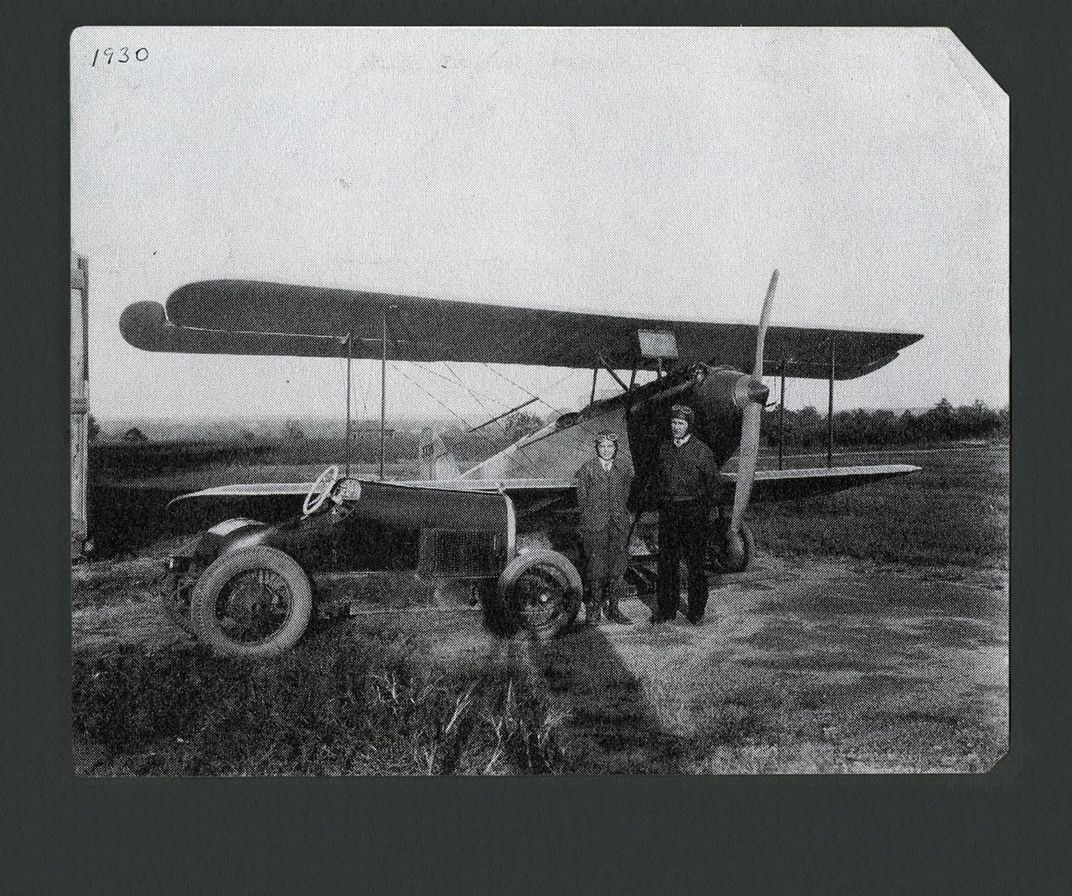
Since May, when the Athens Banner article first announced the Epps-Huff project, the citizens of Athens had been waiting to see an airplane fly. The two builders selected Saturday, August 28, for the flight, and word spread quickly. A large crowd was expected, along with newspaper reporters and perhaps photographers. Ben and Zumpt’s success or failure would be splashed across the state.
The sky was beginning to lighten when the two men loaded the components of their invention on a horse-drawn dray and headed to Lynwood Park. The park was a long, rectangular parcel with an excellent site at the top of a hill for launching an airplane. From the hill a continuous downward slope led over open, terraced land.
Ben positioned his hands and feet on the plane’s control devices. Zumpt grabbed the propeller with both hands and, at Ben’s nod, pulled hard. The monoplane got a bad start, but succeeded in clearing the ground by about a foot and skimmed through the air above the ground for 50 yards. Then the machine bumped into a terrace and it was all over.
The first flight in Georgia was a stunning accomplishment, but Ben and Zumpt didn’t know—and never realized during their lifetimes—that the flight was more than a first in Georgia.
The two Georgians had never heard of Henry Walden, a dentist who lived in Mineola, Long Island, and practiced in Manhattan. Like Ben and Zumpt, Walden was passionate about aviation, and he too had built an Anzani-powered monoplane. During a trial run, Walden had gotten his fragile craft to rise a few feet off the ground and sustain a controlled flight of just over 30 feet before the one-gallon gas tank ran dry. He is recognized today for having built and flown the first monoplane in the United States, a feat he achieved on December 9, 1909—103 days after the flight of the Epps-Huff III monoplane.
**********
Before publishing the story of Ben and Zumpt’s real achievement—and the actual date on which they flew—I visited Ben’s youngest son, Pat Epps, the only child still living in Georgia. Like his father, Pat is well known in aviation circles. Since 1965 he has been owner and operator of Epps Aviation at DeKalb-Peachtree Airport in Atlanta and has over 10,000 flying hours as a commercial pilot. He has won several national awards and, like his father and Ben Jr., is an inductee in the Georgia Aviation Hall of Fame. He is most widely known for having led an 11-year project to retrieve a World War II Lockheed P-38 Lightning, Glacier Girl, from beneath 265 feet of Greenland ice cap.
Pat agreed to meet despite his suspicion that I was a revisionist-history nutcase. He listened and examined the documents that supported my conclusions, but in the end he told me, “You’re asking me to change what I’ve believed about my father’s flight for more than 80 years.” We’ve had several conversations since, and he could not have been more helpful and accommodating in answering my questions, recounting family stories, and sharing copies of scrapbook pictures.
Without the financial means to turn an airplane hobby into a commercial enterprise, the Epps-Huff partnership ended by late 1910, and Zumpt moved to Atlanta. He was never involved in aviation again. He worked for various motion picture theaters and did electrical work. It was World War II that brought Zumpt to Jacksonville. He worked as an electrician, rewiring the naval air station there. Ben, on the other hand, stayed in aviation the rest of his life. He went on to build six more models and instilled his love of aviation in all of his children. He lost one son at an early age; eight of the remaining nine children became pilots. Ben taught hundreds of students to fly and died at Epps Field doing what he loved most. A potential buyer was trying out one of his airplanes, and Ben went along as a passenger. As they were taking off, the airplane suddenly nosed over and went straight into the ground. Ben never regained consciousness.
**********
In 1929, the 20th anniversary of Georgia’s first flight—and also the year that Ben Epps Jr., at 13, became the youngest person at the time to solo—Ben Epps Sr. purchased a lot in a residential subdivision and built the house where he lived the rest of his life. He never mentioned to his wife or children why he selected the lot he bought. It was in what was once called Lynwood Park and sat at the top of the hill where the first flight was launched. From his front door Ben had a view down the Plaza, a street that had not existed in 1909, but that today closely tracks the path followed by the first monoplane flown in the United States.
